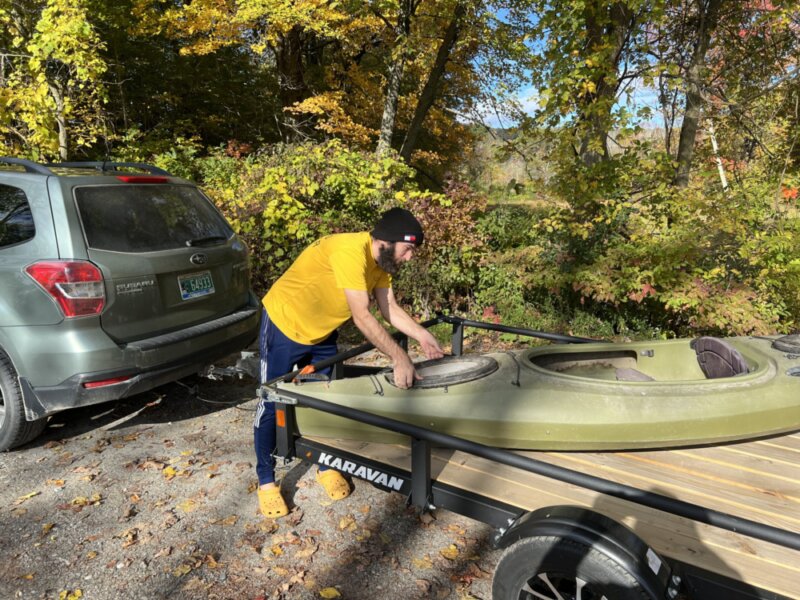Fight against invasive aquatic species requires vigilance
Lewis Creek Association has maintained an educational boat launch steward program for three summers at Bristol and Monkton Ponds where the stewards have interacted with nearly 1,600 boats and intercepted 367 boats that had aquatic plants on them.
The boat launch stewards greet boaters as they arrive at the ponds and offer to inspect their boats for aquatic invasive species, while also collecting data on where the boat has been and how many aquatic organisms they encountered.

A Lewis Creek Association boat launch steward inspects a kayak at Bristol Pond.
They educate boat owners on how to prevent the spread of aquatic invasive plant species, which includes cleaning, draining and drying your boat and other equipment that has been in the water before moving to a different water body.
Listen up, town beach swimmers: This could even include swimsuits and life jackets, which could carry small microscopic organisms like the fishhook water flea, which was recently found in Lake Champlain.
The fishhook water flea, or Cercopagis pengoi, is an aggressive and predatory animal plankton, which may compete with native species for food and impacts anglers by fouling fishing lines, according to the New York Invasive Species website.
Such invasive species have long threatened the health and populations of native plants in the Lewis Creek and Lake Champlain watersheds. The aquatic invasive plant species form dense mats of vegetation and can impede the activities of recreational boaters, swimmers and anglers, while degrading ecosystems and wildlife habitats.
Management of aquatic invasive plants can be difficult because they are easily spread via seeds, roots, fragments, animals and humans.
As of 2022, there were three known aquatic invasive species in Bristol Pond: European frogbit, Eurasian watermilfoil and brittle naiad, and two aquatic invasive species in Monkton Pond: Eurasian watermilfoil and curly-leaf pondweed. If left unmanaged, the aquatic invasive plant species in these ponds could spread throughout the rest of the watershed and the state.
Next time you are at Bristol Pond or Monkton Pond, say “hi” to the boat launch stewards. They will gladly discuss any topics regarding aquatic invasive species and how you can help prevent their spread. If you’re interested in learning more, reach out to Kate Kelly, program manager for Lewis Creek Association or 802-488-5203.

